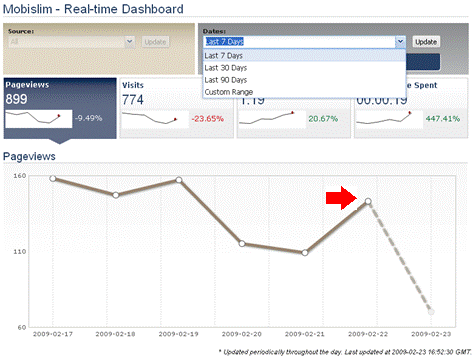Living one day at a time? Don’t if you want to target your mobile marketing
by Sukey Miller

While reading the paper during breakfast at the weekend it dawned on me how time specific many of the articles were – if I had read them any later than breakfast, I would have missed out on all the fun to be had.
The paper obviously understands that most of their readers would be reading over a plate of toast and jelly/marmalade (depending on which side of the ‘pond’ you live) and could accurately target their copy accordingly.
What about other forms of targeted messaging? Well, we know that TV ads are placed at specific times based on viewing patterns or the profiles of viewers to certain shows. Indeed, the price of those ad slots is often priced according to detailed viewing statistics.
That brings us to the mobile web. Here we have the dream marketing device – a screen carried in the pocket of each of our customers 24/7. It’s with them at work, at home, while out and about or at the game; it is even there while they eat their breakfast at the weekend! So in just the same way that traditional media, such as TV and newspapers, understand their readership or viewing patterns, can mobile web publishers see detailed readership patterns and trends across all their mobile sites and thus target content or price advertisements accordingly?
A quick look at my favorite mobile sites seemed to indicate not – something seems to be stopping time based targeting for content or ads and indeed a worrying lack of any personal targeting of any content. Don’t people know about the Bango Identifier? What are we missing?
Before I go and adapt my content according to time of day or start pricing my ads according to viewing patterns, I need to know my viewing patterns – who is visiting when and from where and my peak viewing times? It appears that this simple concept is not so simple for people to implement on the web in general, let alone with mobile. It comes back to where all good campaigns should start – the data.
A quick play with a number of mobile (and desktop) web analytics products quickly highlighted a major flaw – the data reported is simply not granular enough. Try it for yourself – pick your favorite mobile analytics tool and tell me what time of day you saw your main viewing peaks. Was it the morning and afternoon commutes or the lunch break?
Most analytics products only tell you about the last month or week or a daily level and cannot reveal the daily traffic patterns. Where a product lets you see a day, it only shows you a single total and fails to reveal what happened within that day – what point is a graph with just one lone point plotted?
I was quite amazed that only Bango shows you an hour by hour breakdown of your traffic. Bango records all events as Coordinated Universal Time which you can export to get a very fine degree of granularity. This level of detail is fundamental to unleashing the full potential of mobile – whether you want to change content based on time of day and measure the response, or price your ads according to your traffic volume throughout the day. Choosing the right analytics solution appears to make all the difference.
Subscribe to our newsletter
Get the latest subscription bundling news and insights delivered straight to your inbox.


















